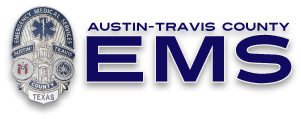Stroke is another time-sensitive emergency. In this case, blood flow to a portion of the brain has been interrupted by bleeding or a blocked blood vessel. If left untreated, the affected brain tissue will die, causing permanent disabilities. The Centers for Disease Control estimates that almost 800,000 people in the United States have a stroke every year, and that nearly 130,000 people die from stroke annually.
We report these measures by the fiscal quarter due the relatively low number of patients treated for strokes each month.
Stroke Scale Documented
The Cincinnati Prehospital Stroke Scale (CPSS) is an assessment tool we use to identify patients having a stroke. This chart shows the percentage of ATCEMS stroke patients who have a CPSS documented on their patient care report.

Why is This Important?
Rapid recognition of stroke patients in the field is a critical factor in ensuring rapid transport of these patients to an appropriate facility.
Get more information about this measure (will be linked)
Blood Glucose Testing
This is the percentage of patients exhibiting signs and symptoms of a stroke who receive a blood glucose assessment by EMS. Our goal is to assess the blood sugar level of 100% of patients with signs and symptoms of a stroke.
Why Is This Important?
Hypoglycemia, or low blood sugar, easily can be mistaken for a stroke since both disorders can present with confusion and weakness. Fortunately, a simple blood test can distinguish between the two conditions. This is important because hypoglycemia can be easily reversed in the field; those patients may not event require or desire transport to a hospital.
Get more information about this measure (will be linked)
Stroke Alert Scene Time
Scene time is the interval between the time that ATCEMS arrives at the patient’s location and the time that the ambulance begins transport of the patient. The Stroke Scene Time goal is 15 minutes or less 90% of the time. This data does not include incidents where scene delay is beyond the control of the medics, such as difficulty locating and accessing the patient.
Why Is This Important?
These patients require rapid assessment and treatment at a hospital that has the equipment and personnel necessary to provide definitive care. It is vital that we identify strokes as quickly as possible, and provide timely care and transport in order to expedite their treatment, thereby improving their outcomes. This measure shows our compliance with that goal.
Get more information about this measure (will be linked)
Stroke Alert Call-to-Door Time
We measure the call-to-door times beginning from the time that the communications medic answers the phone in the 911-center. The time interval ends when the ambulance arrives at the hospital with the patient. Because many of the variables that affect the call-to-door time are outside of the control of EMS, we do not have a goal for this measure.
Why Is This Important?
Guidelines from the American Stroke Association state that “the primary goals of EMS assessment and management [of stroke patients] are rapid evaluation, early stabilization, neurological evaluation, and rapid transport and triage to a stroke-ready hospital.” Monitoring average call-to-door time helps us ensure that we are meeting these guidelines.
Get more information about this measure (will be linked)
Transport to Stroke Center
This indicator measures the percentage of patients who are experiencing a stroke and accept care from EMS that are taken to a comprehensive stroke center.
Why Is This Important?
Stroke centers are staffed and equipped to care for these patients around the clock; they do not need call in specialists once a patient having a stroke arrives at their door. By transporting stroke patients directly to these facilities, we help reduce the amount of time needed for them to receive definitive care, thereby improving their outcomes.
Get more information about this measure (will be linked)
Patients Receiving Full Bundle
This indicator measures the percentage of stroke patients whose treatment met compliance standards for all five stroke measures:
- CPSS correctly documented on PCR;
- Blood glucose test performed and documented;
- Scene time less than 15 minutes;
- Call-to-door interval less than 45 minutes; and
- Transported to a comprehensive stroke center.

Why is This Important?
Each item that we measure on this page is important for care of stroke patients. It is also vital that each stroke patient receive all components of their care. This indicator gives us a high level view of how well we are doing that.
Get more information about this measure (will be linked)

